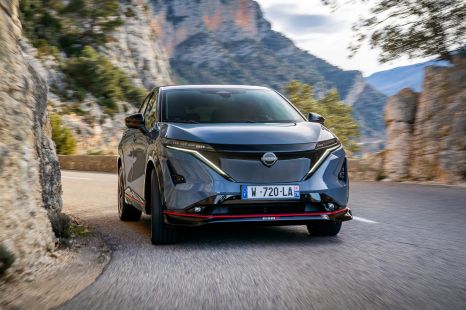

Shane O'Donoghue
2025 Nissan Ariya Nismo review: Quick drive
6 Days Ago
Mitsubishi has a new mid-size, three-row SUV, but the Indonesian-built Destinator is destined only for markets such as Southeast Asia and Africa.

News Editor
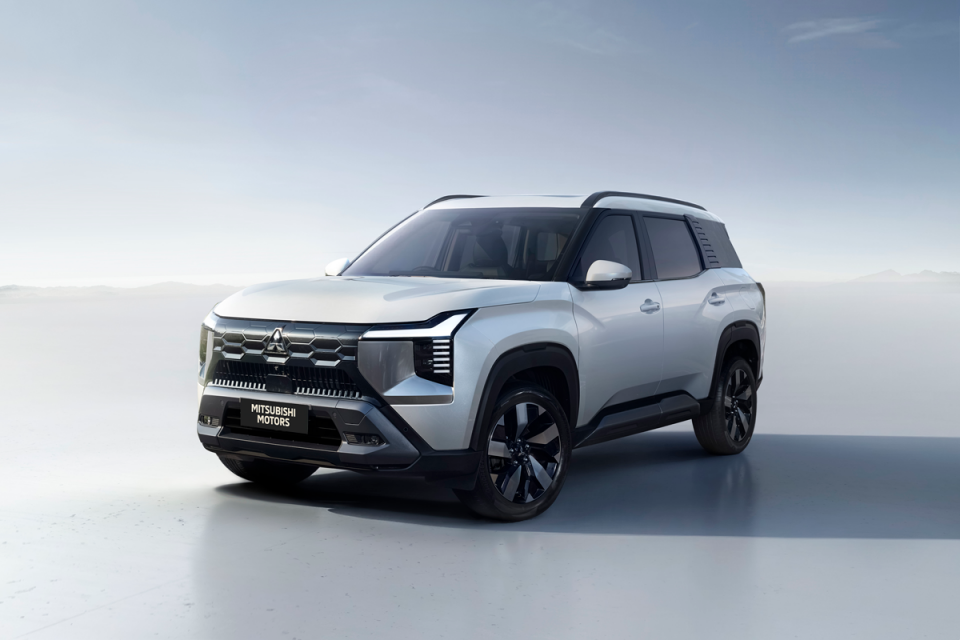

News Editor
The new Mitsubishi Destinator is roughly the size of the Outlander and, like the popular mid-sizer, offers three rows of seating.
It’s perhaps no surprise, then, that the Indonesian-built SUV isn’t planned for an Australian launch.
Instead, it’s the third of a trio of “global strategic models” from Mitsubishi in Indonesia, following the Xpander people mover and the Xforce small SUV, with the Japanese brand calling its operations in the Southeast Asian market a “cornerstone” of its business.
It’ll be offered not only in ASEAN markets like Indonesia, Vietnam and the Philippines, but also in South Asia, Latin America, the Middle East, and Africa. Indonesian sales start this month.
Hundreds of new car deals are available through CarExpert right now. Get the experts on your side and score a great deal. Browse now.
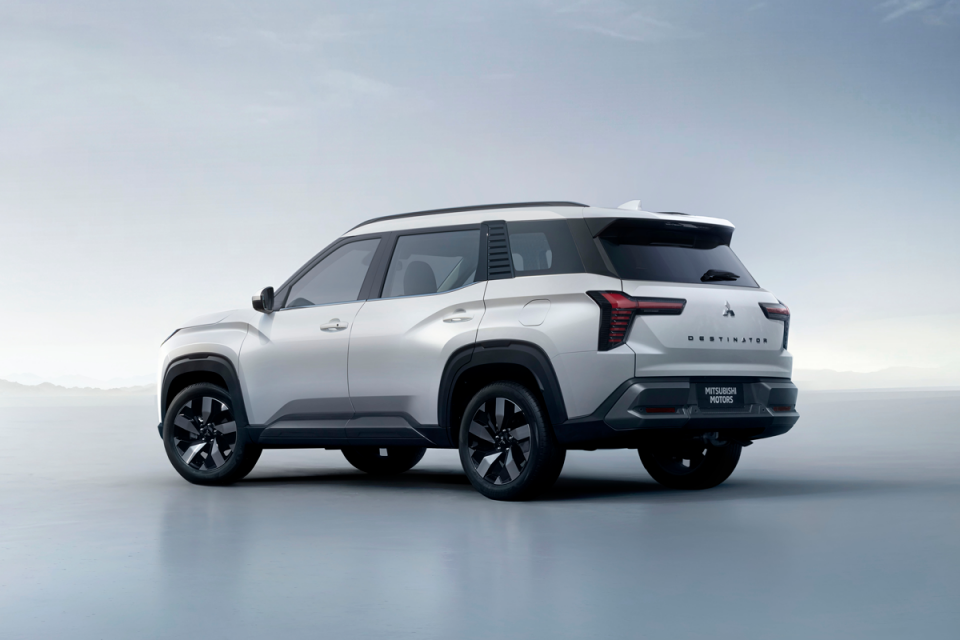
That leaves the Outlander – which isn’t sold in Indonesia – for markets like Australia, North America and Europe.
While close to the Outlander in terms of length and width, the Destinator – previewed by last year’s DST concept, which it closely resembles – rides a 109mm longer wheelbase. A seven-seat configuration is standard.
The only engine is a turbocharged 1.5-litre four-cylinder petrol engine producing 120kW of power and 250Nm of torque, with drive sent to the front wheels only via a continuously variable automatic transmission (CVT).
This powertrain is shared with the Eclipse Cross, and a mild-hybrid version of this is being introduced to the Outlander in the US market but hasn’t been confirmed for Australia.
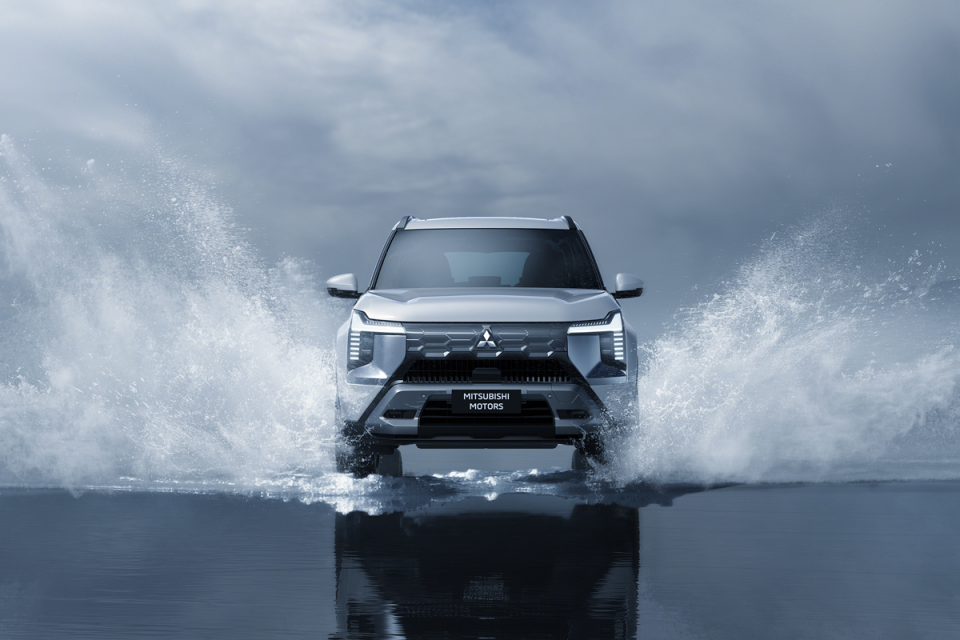
The Destinator rides on MacPherson strut front suspension, with a torsion beam at the rear.
It has more ground clearance than the Outlander, and greater approach, rampover and departure angles.
Here’s how it compares with the Outlander:
| Destinator | Outlander | |
|---|---|---|
| Length | 4680mm | 4720mm |
| Width | 1840mm | 1862mm |
| Height | 1780mm | 1742-1745mm |
| Wheelbase | 2815mm | 2706mm |
| Ground clearance | 214mm | 205-210mm |
| Approach angle | 21 degrees | 18-18.3 degrees |
| Rampover angle | 20.8 degrees | 17.8-18.1 degrees |
| Departure angle | 25.5 degrees | 22-22.2 degrees |
| Weight | 1495kg | 1585-1695kg |
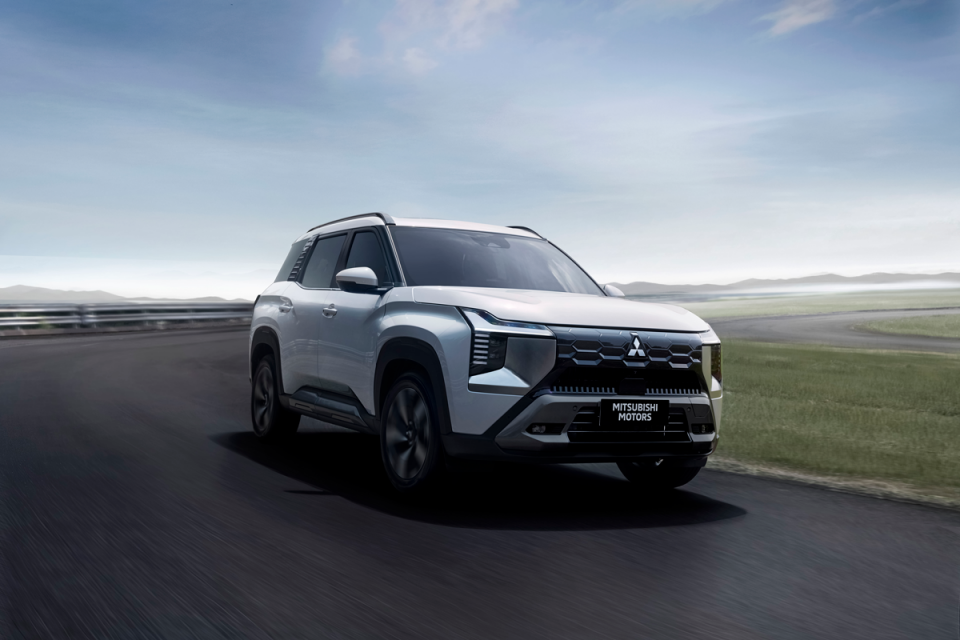
Mitsubishi notes ground clearance expands to 244mm without the Destinator’s under cover.
The extra ground clearance over an Outlander is intended to make this not only easier to drive on rough roads, but also through heavy rain.
Mitsubishi says it has tuned the Destinator’s suspension for comfort on ASEAN roads, using a Japanese course engineered to simulate these surfaces and then evaluating and fine-tuning it in Indonesia.
The Destinator is front-wheel drive, but Mitsubishi says it has leveraged its all-wheel control technology. For example, there’s Active Yaw Control, which adjusts the driving force of the left and right front wheels for greater cornering ability.
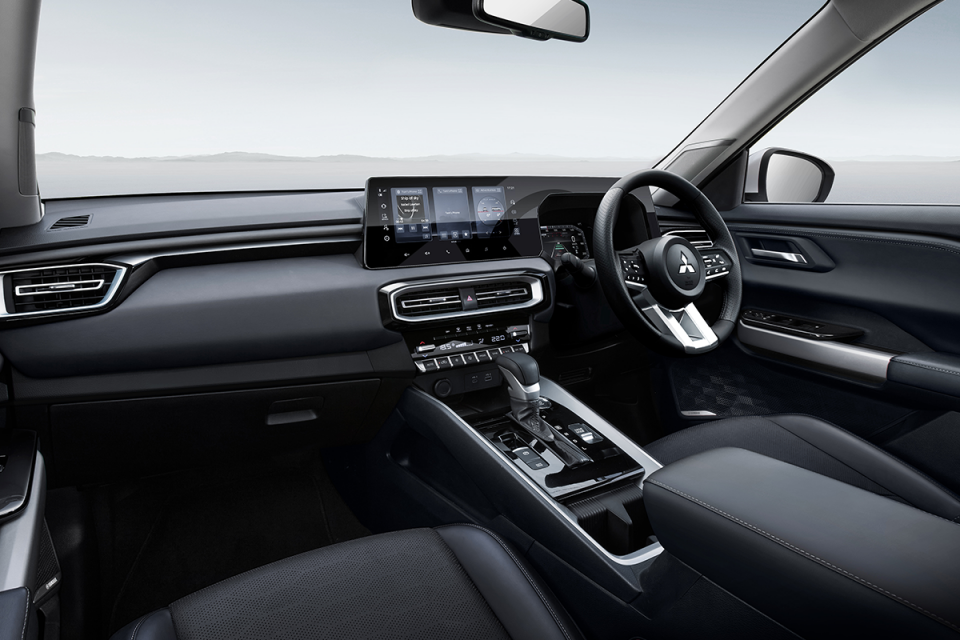
There are five selectable drive modes: Wet, Tarmac, Normal, Gravel and Mud.
There’s a clear resemblance to the Xforce, particularly the Y-shaped lighting elements front and rear, but the Destinator differs with its boxier profile and creased fenders.
There are 18-inch wheels, as well as skid plates front and rear.
Inside, there’s a 12.3-inch touchscreen infotainment system and an 8.0-inch digital instrument cluster screen.
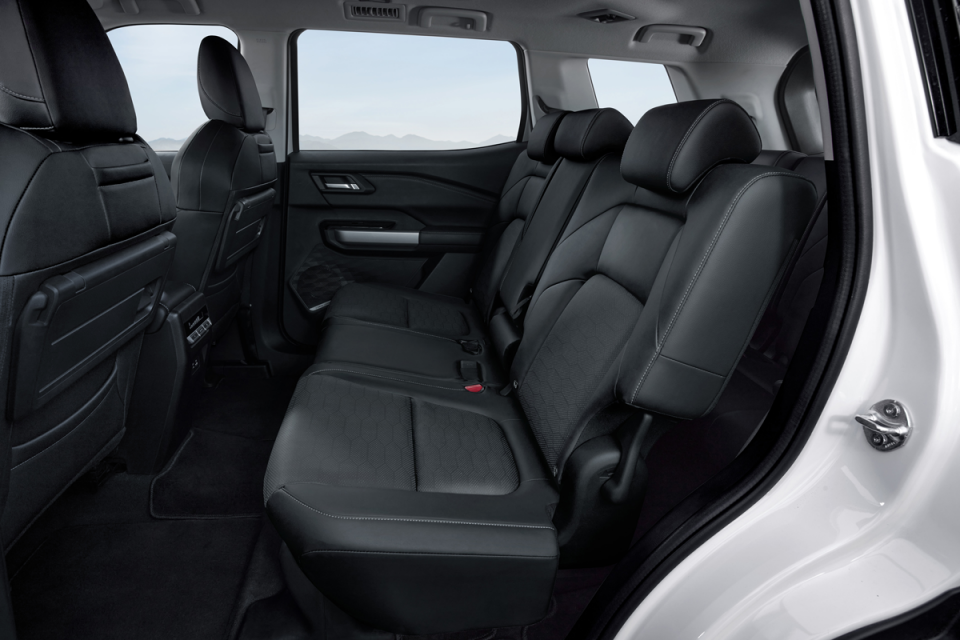
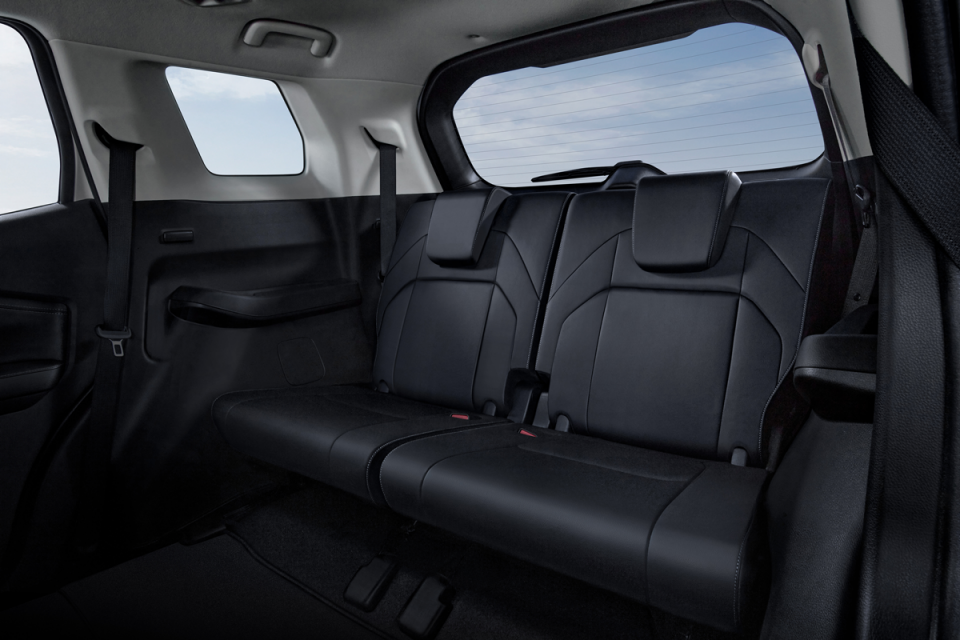
Available luxury features include a panoramic sunroof, eight-speaker Dynamic Sound Yamaha Premium sound system, and 64-colour ambient lighting on the dashboard and front and rear door trims, which can also be set to cycle through colours or gently pulse.
According to Mitsubishi, U-turns are common in ASEAN markets, so it has fitted a steering wheel with an easy to grip shape which, combined with a “responsive gear ratio”, aids manoeuvrability.
Mitsubishi promises the interior has “soft, premium material” and there’s comfort for all passengers, specifically noting the third row has “high hip points and spacious knee room”. Those in the rearmost row also get their own air vents, as well as USB-A and USB-C outlets.
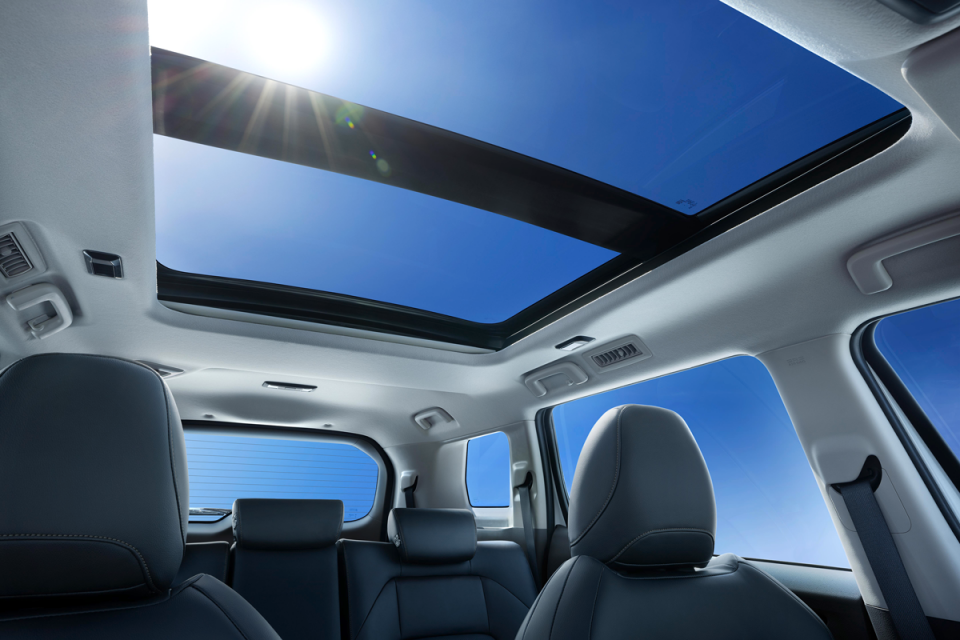
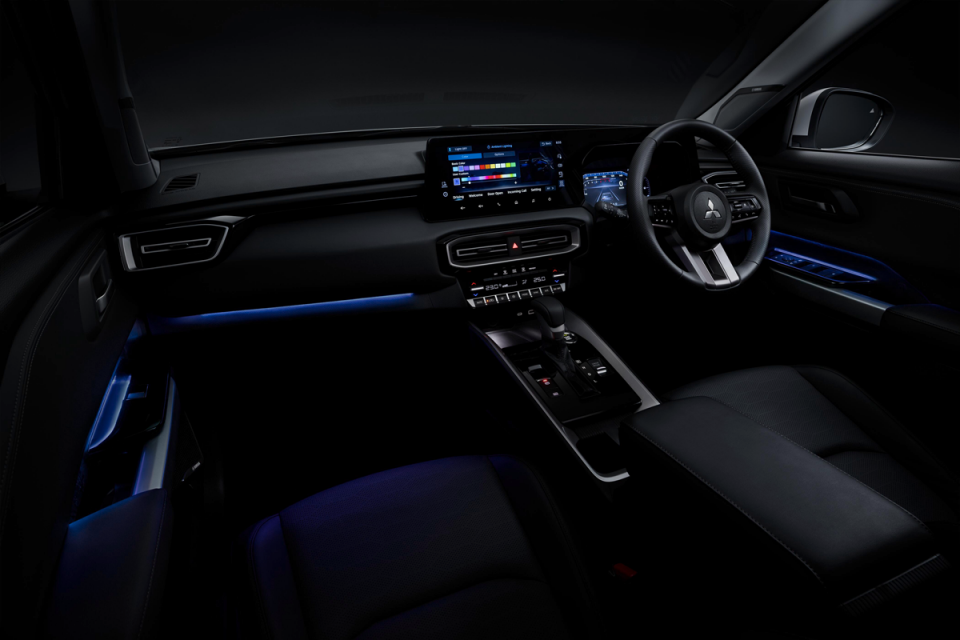
Other convenience features include seatback tables on the front seats.
The second row splits 40:20:40 and the third row 50:50, with both folding flat, and Mitsubishi promises that even with the third row up there’s room for four gallon-sized water bottles.
Available safety equipment includes adaptive cruise control, autonomous emergency braking, blind-spot monitoring, rear cross-traffic alert and a surround-view camera, while six airbags are fitted.

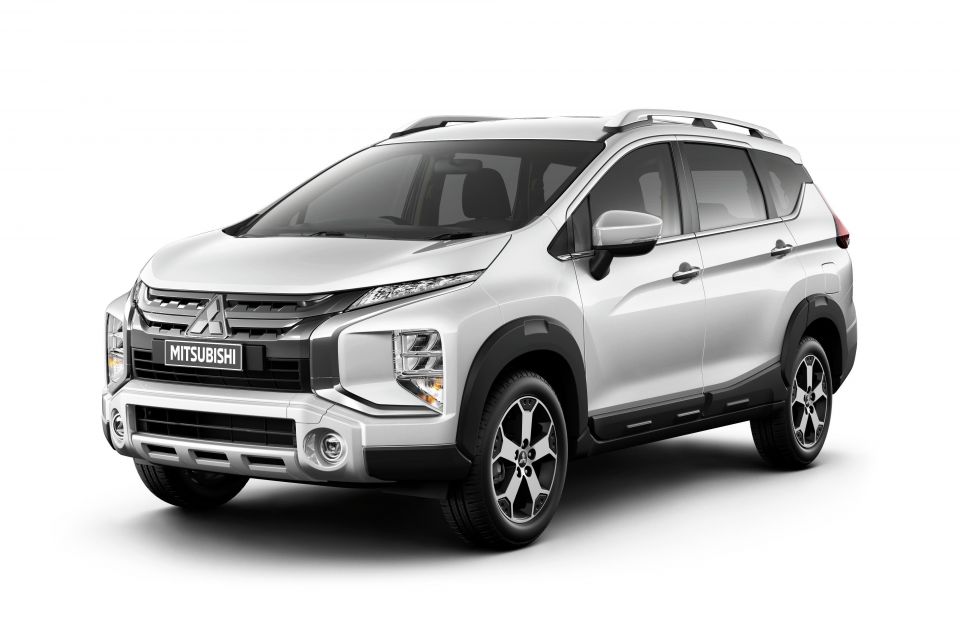
ABOVE: Mitsubishi L300 and Xpander Cross
Connected services features include automatic collision notifications, while owners can use their smartphone to remotely check the vehicle’s fuel level and location and control features like the air-conditioning.
Mitsubishi’s Indonesian lineup looks quite different to ours. While the familiar Pajero Sport and Triton are sold there, the ASX, Eclipse Cross and Outlander aren’t.
Instead, Mitsubishi sells its aforementioned three “global strategic models”, plus an electric kei-class van called the L100 and the 1979-vintage L300 light commercial vehicle.
Where expert car reviews meet expert car buying – CarExpert gives you trusted advice, personalised service and real savings on your next new car.
William Stopford is an automotive journalist based in Brisbane, Australia. William is a Business/Journalism graduate from the Queensland University of Technology who loves to travel, briefly lived in the US, and has a particular interest in the American car industry.


Shane O'Donoghue
6 Days Ago
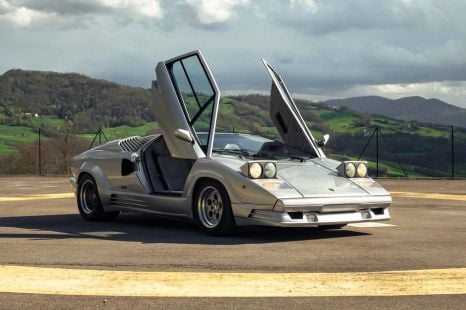
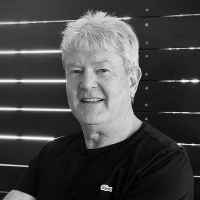
Anthony Crawford
5 Days Ago
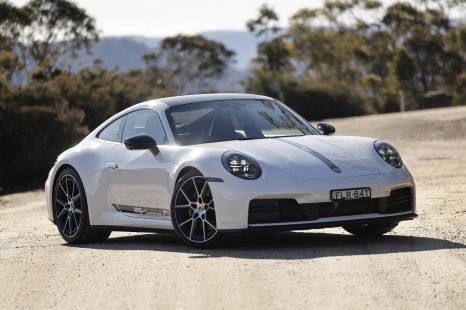

Matt Campbell
4 Days Ago
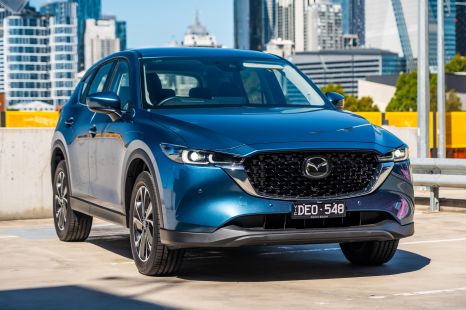

James Wong
3 Days Ago
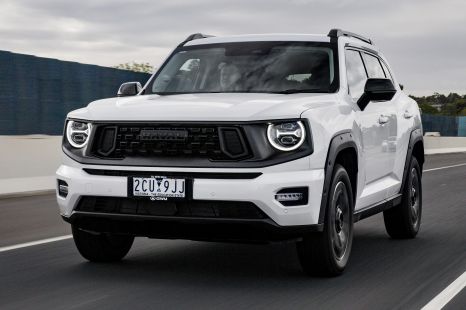

Max Davies
1 Day Ago
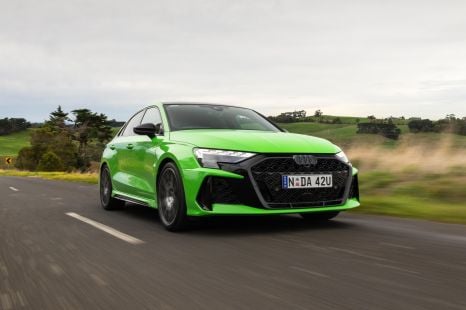

Josh Nevett
11 Hours Ago